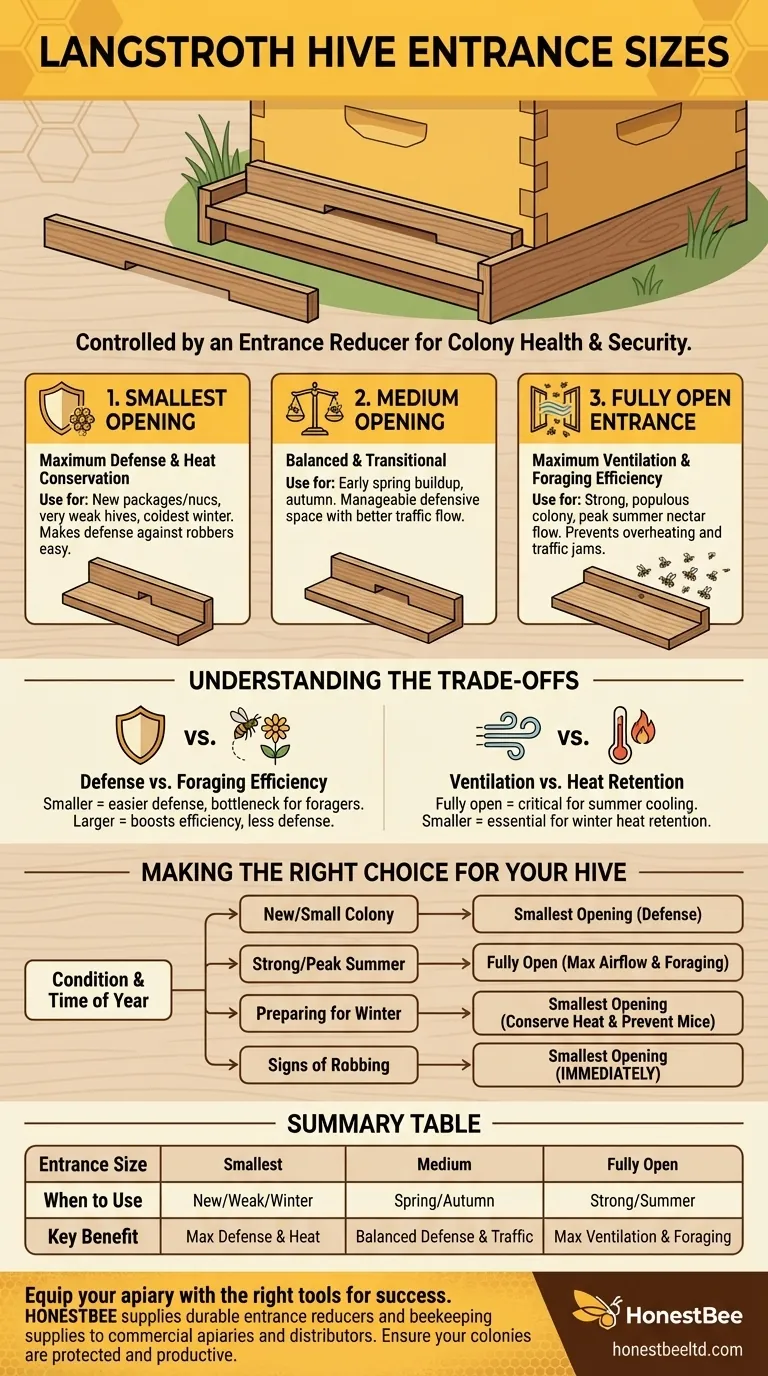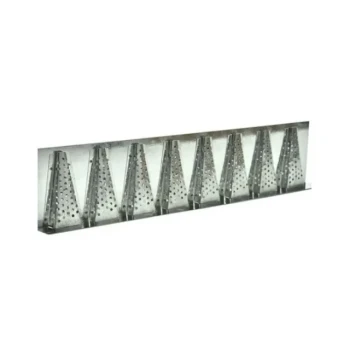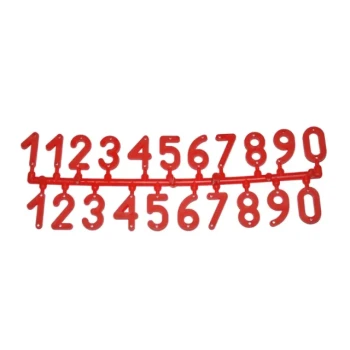In short, a standard Langstroth hive has three entrance sizes. These are controlled by a simple wooden block called an entrance reducer, which provides a small opening, a medium opening, or can be removed entirely for a fully open entrance. The size you choose is a critical management decision that directly impacts your colony's health and security.
The core principle is simple: the hive entrance must be large enough for the bees to work efficiently but small enough for them to defend. This size is not static; it must be adjusted based on the season, the colony's population, and external threats like robbing insects.

What is an Entrance Reducer?
An entrance reducer is one of the most fundamental yet important pieces of equipment for a Langstroth hive. It allows you to control the flow of traffic and air at the main entrance on the bottom board.
A Simple but Critical Tool
The reducer is typically a small, rectangular block of wood designed to fit snugly into the main entrance of the hive's bottom board. It's a standard component for both 8-frame and 10-frame Langstroth hives.
How It Creates Different Sizes
The reducer itself is what provides the different entrance options. It typically has two distinct notches cut into it:
- A very small notch on one side.
- A medium-sized notch on the other side.
By rotating the block or removing it, you can instantly set the entrance to one of three configurations.
When to Use Each Entrance Size
Adjusting the entrance is a key part of responsive beekeeping. The correct size depends entirely on the current needs and condition of the colony.
The Smallest Opening
This setting offers maximum defense and heat conservation. It is used when the colony is at its most vulnerable.
Use the smallest opening for newly installed packages or nucs, for very weak hives, or during the coldest parts of winter. It makes it easy for a small population of guards to defend against robbers like wasps or bees from other hives.
The Medium Opening
This is a balanced, transitional setting. It provides a more manageable defensive space than a fully open entrance but allows for more traffic than the smallest notch.
The medium opening is ideal during the early spring buildup and in the autumn. It helps as the colony is growing or shrinking and can still be susceptible to robbing or sudden cold spells.
The Fully Open Entrance
Removing the reducer completely provides maximum ventilation and prevents traffic jams at the entrance.
This setting should only be used for a strong, populous colony during the peak of the summer nectar flow. The high number of foragers coming and going requires an unobstructed path, and the large opening helps prevent the hive from overheating.
Understanding the Trade-offs
Choosing an entrance size is always a balance between competing needs. Understanding these trade-offs is key to making the right decision.
Defense vs. Foraging Efficiency
A smaller entrance is easier to defend but creates a bottleneck for foragers. This can reduce the amount of nectar and pollen the colony brings in.
A larger entrance boosts foraging efficiency but can leave the colony vulnerable, especially if the population is not large enough to guard the entire opening.
Ventilation vs. Heat Retention
A fully open entrance is critical for airflow, helping the bees cool the hive by fanning their wings during hot weather.
However, that same opening becomes a major source of heat loss in the winter. A small entrance is essential for helping the colony maintain its cluster temperature with minimal effort.
Making the Right Choice for Your Hive
Use the condition of your colony and the time of year as your guide.
- If you are installing a new, small colony: Start with the smallest opening to give them a defensible space.
- If your colony is strong during peak summer: Remove the reducer completely to maximize airflow and foraging.
- If you are preparing for winter: Use the smallest opening to conserve heat and prevent mice from entering.
- If you ever notice signs of robbing: Immediately switch to the smallest opening, regardless of the season.
Properly managing the hive entrance is one of the simplest and most effective ways to support your bees' natural ability to thrive.
Summary Table:
| Entrance Size | When to Use | Key Benefit |
|---|---|---|
| Smallest Opening | New packages/nucs, weak hives, winter | Maximum defense & heat retention |
| Medium Opening | Early spring, autumn, transitional periods | Balanced defense & traffic flow |
| Fully Open | Strong colonies, peak summer nectar flow | Maximum ventilation & foraging efficiency |
Equip your apiary with the right tools for success. Proper hive management starts with reliable equipment. HONESTBEE supplies durable entrance reducers and a full range of beekeeping supplies to commercial apiaries and distributors. Ensure your colonies are protected and productive in every season. Contact our wholesale team today to discuss your equipment needs.
Visual Guide

Related Products
- Multi-Functional Sliding Hive Entrance for Beekeeping
- Beehive Entrance Reducer Guardian Metal Hive Entrance for Bees
- Steel Round Disc Entrance Reducer for Flexzion Bee Hive Nuc Box Gate
- Multi-Functional Rotary Hive Entrance Disc for Beekeeping
- Professional Hive Front Entrance Bee Feeder
People Also Ask
- How does entrance configuration vary seasonally for beekeepers? A Guide to Year-Round Hive Health
- What size is the entrance hole in a native bee hive? The 13mm Standard for a Thriving Colony
- How can a Langstroth hive entrance be adjusted? Mimic Natural Bee Preferences for a Healthier Hive
- How do bees manage debris with a small hive entrance? A Guide to Strategic Hive Management
- What are some alternative strategies to using entrance reducers? Empower Your Bees for Natural Hive Defense



















